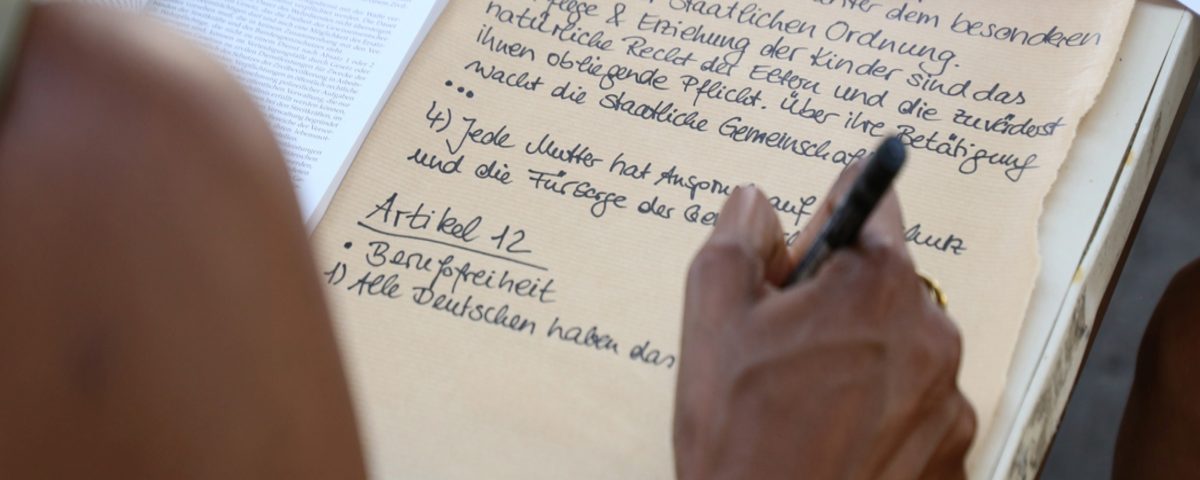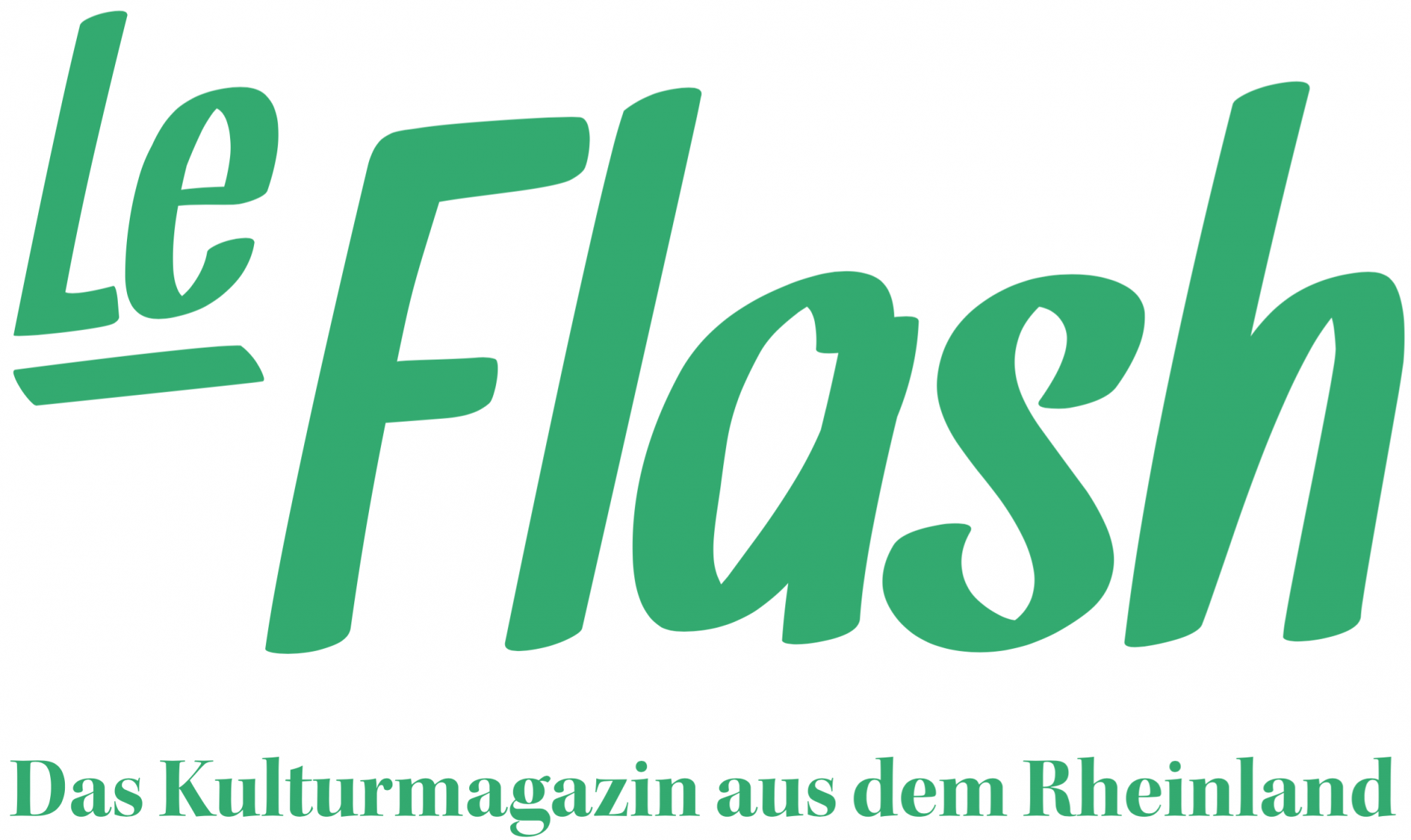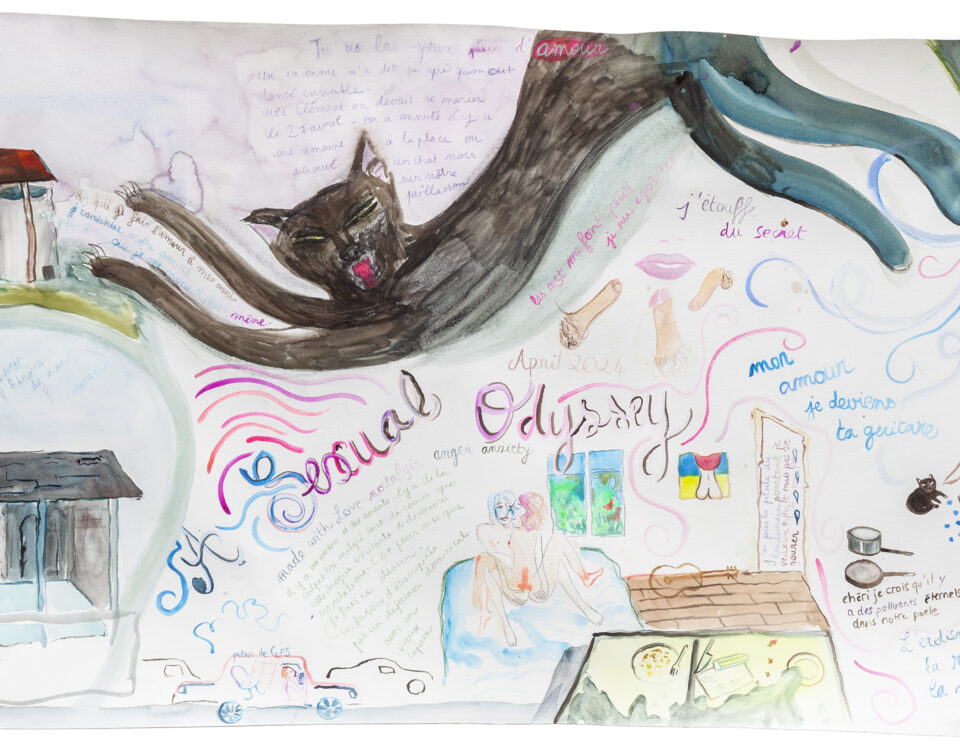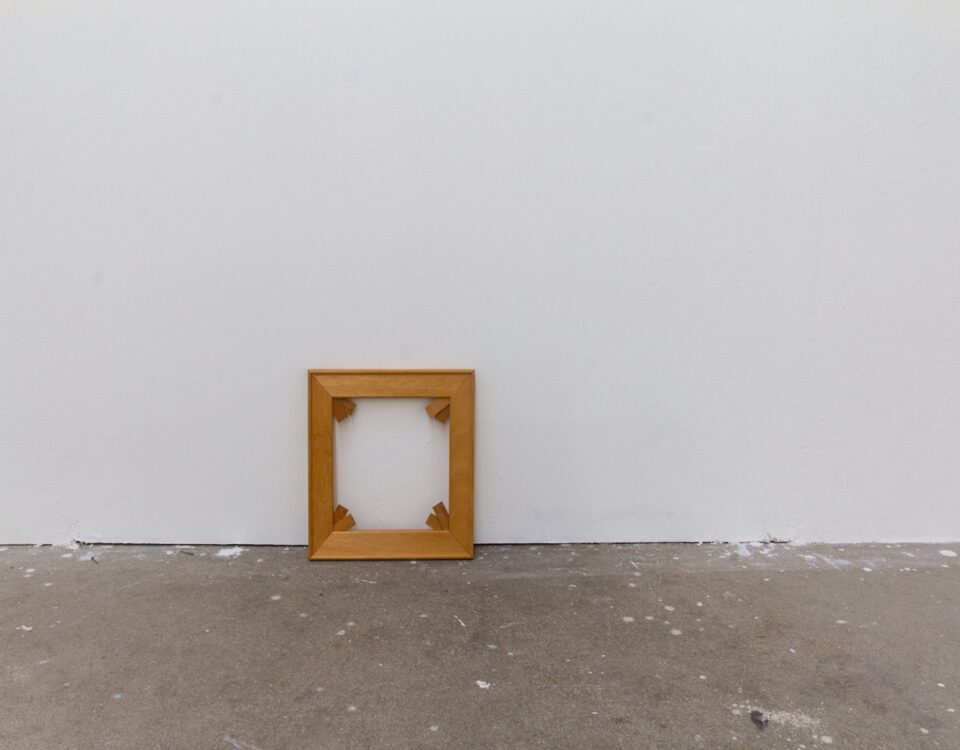Interview mit Morgan O’Hara zu Handwriting the Constitution/Live Transmission

Morgan O'Hara, Open the door a window #2, Kulturbunker Mülheim, 2022-07-24, Fotos © Evamaria Schaller, BLACK KIT Cologne
Anlässlich einer Sitzung am 24.07 in Köln Mühlheim traf Cihan Simsek von LeFlash die US-Amerikanische Künstlerin Morgan O’Hara, um einen genaueren Einblick zu ihren Aktionen Handwriting the Constitution sowie Live Transmission zu erhalten. Ein Gespräch über den Sinn des Lebens, Introvertiertheit und das Herrliche am Unbekannten.
Cihan Simsek: You are one of the conceptual artists of our time. What do you like most about the idea of conceptual art?
Morgan O’Hara: I like to think. And I also like to work with the unknown. I like to get into areas that I have never been before. My art just takes me to things that I don`t know. I try to work with an idea like time for example or space. And then I try to figure out a way of gathering material of daily life to make something visible.
C.S: Very much like it is in Live Transmission. This project began in 1989 and approximately there are over 3.000 drawings. Back then, what was the thought process that started this whole project?
M.O: Well, my work is very organic, and I have been an artist for a very long time. So, it grew out of another project. If you visualize confluent rivers; They are running parallel, and they each have their own pace. That’s a little bit like my different bodies of work. So, there is a lot of conceptual overlapping in the work. So, the first thing that I tried to do, I was trying to understand the meaning of life. In the end what I came to, was, everything that exists in the world now happened in 24 hours and no person who ever lived had more than 24 hours in the given day. That was it. So, there is this one absolute limitation. So, I decided I don’t know what the meaning of my life is, but I know that I use up 24 hours every day. So, I was determined by paying attention to my time I will find out the meaning of life. And after a couple of years, I realized that the meaning is to pay attention.
And then after about 10 years I decided: Will I do keep doing this as a ten-year conceptual series or what will I do with it. And I felt like I only had 2 choices: one was to either quit and call it a ten-year piece or continue to do it for my lifetime, and now I’m in the fifty-third year of doing it. So that’s one whole body of work. And then space came next. And I decided I was doing this series called Portraits of the 21st century and I got people to tell me their life stories. So, the idea is that in the minute you are born your molecules go into the atmosphere and if they were stable theoretically you can get away from the planet, and we recorded everything in maps. And certainly, I did a 158 of those over 20 years. But after that I wanted to do something short and immediate. And then this idea with Live Transmission came.
C.S: The selected list of Live Transmission includes cooks, politicians, dancers, athletes and even children. Do you have a specific system? How do you choose those people?
M.O: Oh, just whatever comes into my life. You know, I’ve been walking down the street, and something will happen. I’m not as compulsive as I was 20 years ago. 20 years ago, I had just dropped everything and drew.
C.S: How important is the artistic intuition in this whole process? Because there seems to be just a tiny space for thinking about the next step?
M.O: I try not to think. My Modus Operandi is very clear. I see something move; I try to track it in real time so that the energy that is from this particular action goes through my eyes, out through my hands, through the pencil, through the paper, in such a way that it’s very faithful. I don’t interpret, I don’t express myself to it. I just track it in real time. And then I try to be so sensitive to it, that the energy of that movement gets transmitted to the Viewer. And then across the Bottom I put the time- space coordinates for the piece. And that allows it from a three-dimensional going to four- dimensions in your mind. If I were to do it with just the drawing and not the time- space coordinates underneath it, first of all it wouldn’t be a live transmission, but secondly it wouldn’t have the same value as an artwork.
C.S: So, talking about your next action Handwriting the Constitution, which I was a part of, and I liked it very much: I have read, that on the Day of the Inauguration of Trump you did go to the New York Public Library to handwrite the Constitution. Can you tell us a bit more about that?
M.O: Sure. I was pretty upset by the fact that he won the election. And the whole process was so awful. And everything in terms of communication and human respect and so forth started just dissolving. People were using worse language and were insulting each other. This happens in politics a lot, but it seemed to be light years worse than it happened before. And then also ideologically, I don’t agree with anything he says. I was discouraged by the fact he got elected and that there were so many People, that adopted his Ideology. So, at the Time, this was before the Inauguration, which was January the 20th. A lot of my friends were going to Washington D.C. to march. There was going to be a big protest, there was going to be 100,000 People. I have been to Washington for Civil Rights Marches and Rallies. I’ve marched a lot in my Life. I started to think about it. From New York to Washington, it takes 5 hours with the bus. Then you spent the whole Day with 100,000 people. After that, you take another 5 hours to go back. That’s not my idea of how to spend a good day. But I needed to do something. And I’m an introvert, I don’t want to always be out there as a body participating in somebody else’s plan.
And one morning I woke up and had this idea and decided: yes, that feels right to me, I’ll handwrite the Constitution. I grew up in Japan, I have an international education. And one of the Things that we did, many Years ago, was: we had to handwrite things to absorb them. Poetry, pieces of religious texts, philosophy, we had to copy them. And I never stopped doing that, I always enjoyed writing. So, this was a natural evolution to do that. And I was telling my plan to one of my studio neighbours. And she asked if she could put it on Facebook. And then it grew. After that I decided to do it every month. And the New York Times wrote a full-page article about it, and then it spread around the United States very quickly.
C.S: Thank you. And as you talked about the fact, that you are an introvert, the Term “activism for introverts” came into my mind, I liked that one. You know, right now there is a lot of political tension in Europe, without going too much in detail, but your action fits to it. You can transfer Handwriting the Constitution to every country or every situation and everybody can get a deeper understanding.
M.O: Yes, every time you read the news it’s another advertisement for doing it.
C.S: And it’s also a very peacefully form of activism.
M.O: Exactly. The non-violent ones are the ones that are the most effective. And I feel very pleased, that I invented an activism for introverts.
C.S: My last question would be, on your website, you wrote that you are more interested in questions than answers. Why?
M.O: If you already know something, then what’s to play with, you know? It’s fun to work on something that you don’t know. It really challenges different aspects of your character, your personality. I think learning and trying to understand things is important. Last night I was at a friend’s house to visit, and we were talking about, that there were more artists in Venice, people that she has contact with, and she could connect me to. And it turns out, that her Husband is a photographer of rugby. And I never really paid attention to rugby. So, it turned out, that we were all sitting and watching a rugby match and I did a Live Transmission of that. And you know that thing that the All Blacks do, that Maori dance. I ended up doing a drawing from that. If there haven’t been some unknown, this thing would not have evolved. I really enjoy that. Going into the unknown, being present and see what can happen.
Titelbild:
Morgan O'Hara, Open the door a window #2, Kulturbunker Mülheim, 2022-07-24, Fotos © Evamaria Schaller, BLACK KIT Cologne



